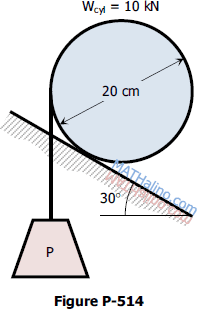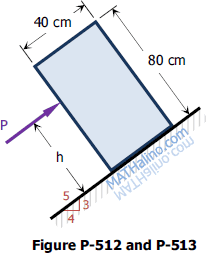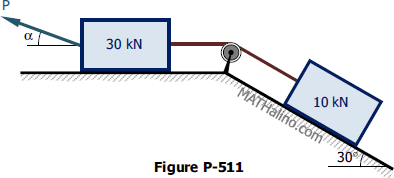Problem 521 | Friction
Problem 521
In Fig. P-519, if μ = 0.30 under both blocks and A weighs 400 lb, find the maximum weight of B that can be started up the incline by applying to A a rightward force P of 500 lb.

- Read more about Problem 521 | Friction
- Log in to post comments





